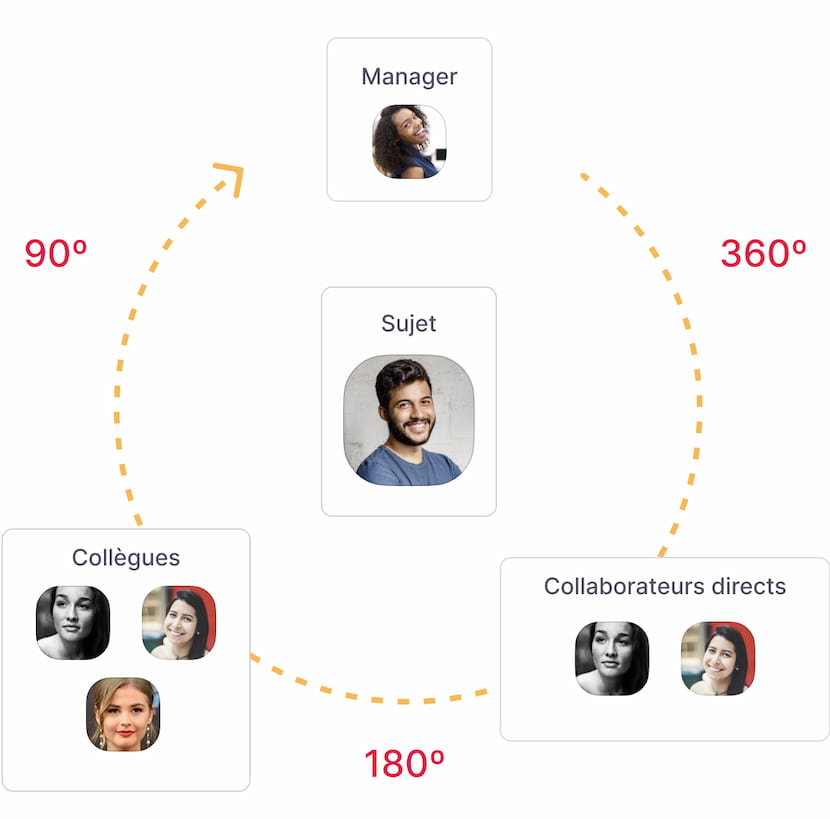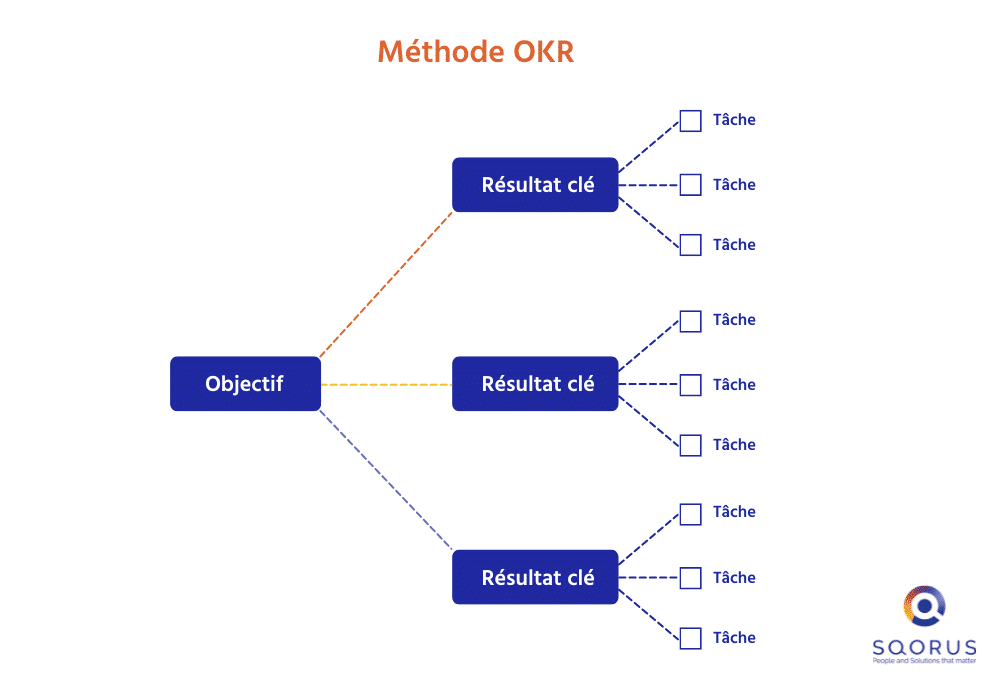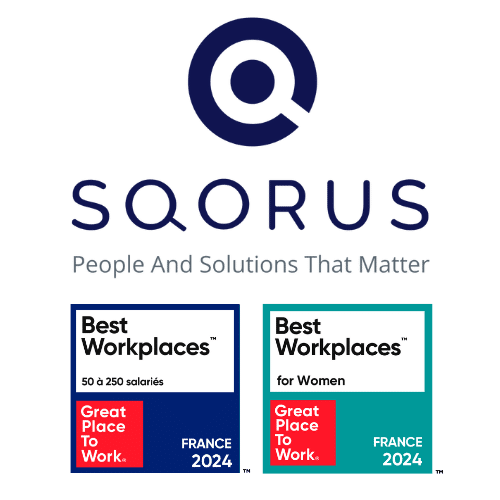Individual annual interviews are often perceived as inefficient and a source of stress for employees. Yet they play a crucial role in the professional development, motivation and performance of teams. To transform these moments into real growth drivers, it’s time to innovate and rethink traditional approaches. In this article, discover 3 ideas to innovate around interviews and performance that address these issues.
It’s hard to have a successful annual performance review when surveys show that employees feel it’s ineffective. The cause: processes and formats that are not always modern, management that is reluctant to review their methods and a lack of communication. The temptation is strong to replace one tool with another when a process malfunctions. Among the pitfalls regularly encountered are the lack of fluidity in the format of annual appraisal interviews, and unsuitable skills matrices. This creates frustration for both employees and their managers who are supposed to support them.
According to Javelo, the HR platform for performance management and talent management, a majority of employees (58%) consider the annual appraisal interview to be an expected and appreciated moment. However, no less than 41% of respondents fear it. 48% of them even consider this appointment as a stress peak in the year. This is a time when major issues are at stake for their professional lives (work environment, salary, career development). Individual interviews have a motivating effect on teams, and are a reliable, structuring tool for your HR policy (assessment, career management, identification of potential, skills development plan, individual and collective performance monitoring, etc.). These approaches should be an agile and flexible tool, not a burden for managers.
Innovation in talent management is therefore key to giving meaning to the interview process and developing the perception of efficiency.
We invite you to discover 3 innovative ideas for managing individual interviews and boosting employee performance.
Idea #1: 360° feedback to innovate the employee evaluation process
Studies are unanimous: we need need recognition and a lot of that comes in the form of feedback we receive from the people around us. In France, in the professional world, 81% of the respondents say they need to know both what they are doing right and what they are doing wrong. 55% feel they lack recognition, 61% would like to receive more positive feedback and 48% more corrective feedback (MoreHuman Partners study).
According to a study published in Harvard Business Review, 72% of employees also believe their productivity would improve if their managers providedmore regular feedback. Finally, less than half of employees say receive regular feedback, according to a joint study by Suc
feel they lack recognition
want to receive more positive feedback
%
more corrective feedback
360 feedback is anindividual assessment process that includes comments from all those involved with the employee being assessed, in order to establish a complete and accurate analysis of his or her professional profile. These stakeholders are line and functional managers, colleagues and subordinates. It can also include comments from direct or indirect stakeholders (customers, suppliers) as well as the employee’sown self-assessment .
The final objective is to define a tailor-made development plan for each assessed employee, identifying his or her strengths and areas for improvement. The most interesting idea is to get a complete picture of an employee’s performance. This is the main advantage of 360-degree feedback. This makes it possible to precisely identify an employee’s strengths and weaknesses, since his or her professional activity is assessed from many different angles (internal, external, horizontal, vertical, etc.).
By only asking managers to evaluate their team members, the results can be biased. Indeed, an employee generally does not behave the same way with his manager as with his peers. 360 feedback enables colleagues to evaluate each other and thus obtain an overall profile of the performance of a team or department.
The360 evaluation also enables teams to give their opinion on the way they are managed. Thanks to the results of the study, the team leader knows exactly how to optimize his management.
Starbucks, for example, has employees evaluate their entire team. The company is renowned for its performance management and attention to detail. As for appraisal interviews (which take place every six months), they are carried out at each site by the site’s general manager. To do this, it relies on both the employee’sself-assessment (based on the same model as his or her own evaluation grid), but also on 360-degree feedback, based on a series of criteria defined by the entire team, from managers to cashiers.
The aim is to foster team spirit: since everyone is committed to the individual performance of their colleagues, collective performance is ultimately improved. This works especially well in small teams, where speech can be released more easily, if everyone understands that it is the collective that is important…

In 2023, it is also essential to mention Artificial Intelligence (AI) technologies, thanks to which it is now possible to collect a multitude of comments, in order to identify mobility wishes for example.
At SQORUS, employees have the opportunity to ask for feedback to anyone in the company with whom they have worked (in-house project, customer assignment).
Since the end of 2022, SQORUS has also been practicing the 360 feedback, and every employee can provide feedback to his manager.
This enables the manager to find out how he or she is perceived, and can also improve performance and those of the company. Sharing a perception with a superior is certainly an act that may seem courageous, but daring to take this step can raise awareness in the other person and improve the way you work with him or her.
By integrating feedback from a variety of stakeholders, such as managers, colleagues, etc., into the management of individual interviews, companies can truly transform their approach to performance appraisal and promote theprofessional development of their employees.
This method enables individual performance assessment more complete and precise definition of skills, offering clear prospects for talent management and the human resources management.
Assessments become more balanced, reflecting an overall picture of each employee’s strengths and areas for improvement.
This approach also encourages transparency and communication within teams, fostering a climate conducive to collaboration and teamwork. skills management.
To anticipate the recruitment challenges of tomorrow, it is essential to develop solid adaptation strategies. In our dedicated article, you’ll find the keys to adapting as a recruiter and remain effective in a constantly changing environment.
Idea #2: The OKR method to improve employee performance
The OKR method (Objectives and Key Results) is a framework for performance management and strategic planning used to define clear, measurable objectives and the key results that need to be achieved to reach these objectives.
The OKR method consists of two main elements: objectives and key results.
- Objectives
Goals are clear, ambitious statements of what we want to achieve.
- Results
Key results are quantitative measures that indicate whether progress is being made towards the objective.
The OKR method method is often used in companies to align employees’ goals and efforts with the company’s strategic objectives.
The key steps for implementing the OKR method are as follows:
- Define objectives: objectives must be clear, ambitious and aligned with company or project strategy.
- Identify key results: Key results must be specific, measurable and achievable. They must be quantifiable to enable objective evaluation of success or failure.
- Define measurement indicators: Measurement indicators are the data or statistics used to assess progress toward the achievement of key results.
- Tracking progress: It is important to regularly track progress toward key results so that actions can be adjusted accordingly to achieve the goals set.
- Review and adjust objectives: objectives and key results need to be regularly reviewed and adjusted to ensure they are still relevant and aligned with the overall strategy.

Here are 2 examples ofOKR to illustrate:
Goal: Write a novel by the end of the year
- Key Result: Write 1000 words every day
- Key Result: Find a publisher
Objective: increase sales by 30% within 6 months
- Key Result: Launch lead acquisition campaigns
- Key Result: Follow up with prospects not contacted in the last 3 months
- Key Result: Re-engage satisfied customers by offering them complementary products
Visit OKR method is a simple approach that connects each of our actions to our objectives. On the other hand, one should not confuse objectives with performance. The objectives of the OKR method must be decoupled. variables determining compensation. This allows the method to be better accepted without becoming yet another race to the bottom, on the one hand, and to complement rather than replace existing tools, on the other.
A goal must be based on a careful balance between ambition and realism. It is not very common in France, but filling a target to 100% is not a good result. On the contrary, it indicates that the objective was certainly poorly defined. Finally, as in any transition process, it is necessary to give yourself time.
Using the OKR method, companies can create a culture of transparency and alignment, where every employee clearly understands the ambitious, measurable goals to be achieved and the key results that measure their success.
The professional interviews become the ideal time to discuss professional projects, assess progress and adjust actions accordingly.
By enabling better human resources management and greater transparency in objectives and key results, this method contributes to the success of annual appraisal interviews and to the development of employees within the company.
Idea #3: Towards an end to the annual interview?
HR practice practice, probably the most widespread in companies, theannual appraisal interview can be perceived as a source of stress and frustration rather than a genuine source of development.
Many large American companies have chosen to eliminate theannual interview.
Microsoft, Dell, IBM, Adobe or Netflix: these technology giants have simply decided to do away with theannual appraisal. to replace it with continuous assessment – or almost continuous assessment. Most of these companies opt for “check-ins”, i.e. quick moments of feedback, on a much more informal, quasi-permanent basis. Cargill, in the food industry, has introduced an Everyday Performance Management system. Others have even gone so far as to install a module on their e-mail server, enabling everyone to evaluate a colleague’s work at the click of a button.
The goal is to stop looking in the rearview mirror.
“By focusing heavily on the rewards and financial rewards of the past year, annual performance reviews hold people accountable for their past behavior. In doing so, they fail to improve current performance or prepare tomorrow’s talent”
– Harvard Business Review magazine.
No longer focusing on the past, constantly optimizing employee performance and quickly identifying promising behaviors: this is the objective sought by companies that have decided to do away withannual performance reviews. Innovative companies have abandoned the classic annual interview in favor of regular “discussions” that allow for real-time performance management and the development of employees’ talents and potential.
In short, the abolition of theannual appraisal interview in favor of a ongoing assessment reflects a positive evolution in the management of individual interviews.
By integrating this approach into their human resources policy, companies encourageprofessional development andskills assessment and employee performance, while adapting their professional project management the demands of today’s market.
With the latest health crisis, employees are increasingly looking for ways to upgrade their skills in order to renew and adapt. Companies must therefore innovate in the area of training to respond to these searches and continue to attract and retain talent. In our dedicated article, discover innovative ways to support your employees in their professional development.
Conclusion on innovation in individual interview management and employee performance
In conclusion individual interview management should no longer be seen as an administrative chore, but as a genuine lever for development and performance for employees and the company as a whole.
By integrating these innovative approaches, you will create an environment conducive to growth, motivation and performance. collective success.
Visit managing individual interviews and employee performance is a vast subject that requires regular monitoring and a great capacity for adaptation.
Beyond the 3 examples cited here, SQORUS, a Council firm specializing in digital transformation, supports its customers on a daily basis, thanks to its LAB, which constantly monitors the latest developments in the field. innovations. If you are interested in this topic, please contact us to discuss it.
It’s time to take the plunge and reinvent individual interview management to unleash your employees’ full potential and build a culture of excellence within your organization.
Contact
A project? A request?A question?
Contact us today and find out how we can work together to make your company’s digital future a reality.













